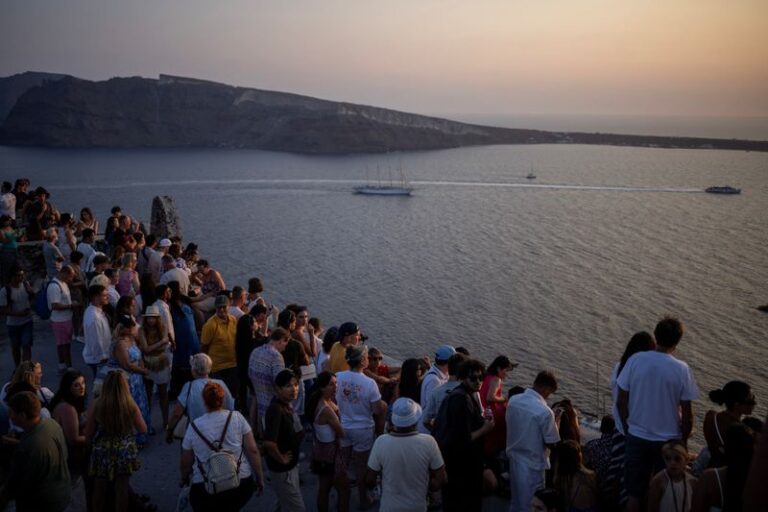Valentini Anagnostopoulou
SANTORINI, Greece (Reuters) – Tourists with selfie sticks and cell phones are streaming into Santorini from all over: on huge luxury cruise dinghies, on buses zigzagging up steep hills and on donkeys clattering along narrow cobbled streets.
Some brave the afternoon heat, searching for a vantage point among the whitewashed houses and blue-domed churches to watch the Greek island’s famous sunset, and as the sun goes down, more people join them, crowding along the cliffs and onto balconies, cameras at the ready.
“This has been my dream since I was in high school,” said American tourist Maria Tavares, 40.
But for many of Santorini’s 20,000 permanent residents, what was once an ideal island with quaint villages and beautiful beaches has been ruined by mass tourism.
As protests against over-tourism erupt in other popular tourist destinations such as Venice and Barcelona, Santorini has become one of the most striking examples of how large numbers of visitors can affect a region.
Island authorities, like other tourist destinations, are seeking to cap visitor numbers.
According to Mayor Nikos Zorzos, about 3.4 million foreign tourists visited the island last year and the numbers are growing, putting a strain on the island’s outdated infrastructure and driving up home prices, making it difficult for islanders to enter the housing market.
Zorzos said he has been lobbying officials for years not to add a single bed to the island and has proposed reducing the number of cruise ship visitors from about 17,000 a day to 8,000.
“It’s in our country’s best interest to have restrictions in place,” he said.
“monster”
Business owners who profit from tourism are also worried.
“Our standard of living has gone down, that’s all,” said Georgios Damigos, who runs the 14-room hotel his parents opened in the 1980s.
“Santorini is a natural wonder, but it is at risk of turning into a monster,” he said.
Santorini’s tourism boom is rippled across Greece, with data showing that domestic tourism receipts rose 16 percent in the first five months of this year and are forecast to surpass last year’s record 33 million visitors in 2024.
For some in Santorini, the increase in tourists is good news.
“With planning and infrastructure, everything is possible,” said Alexandros Pelecanos, vice president of the island’s umbrella trade association.
“Do you want money or not? Do you want a job, an income or not?” he said. “You can’t have peace and quiet and make money at the same time.”
Tourists don’t seem to mind, cheerfully walking past a sign that reads: “Please be respectful. This is your vacation, but it’s our home.”
“It’s hard to walk through the narrow streets, but it’s very beautiful,” said Portuguese tourist Rita Curitvao. “I recommend everyone to come.”
(Additional reporting and writing by Karolina Tagaris in Athens; Editing by Edward McAllister)

